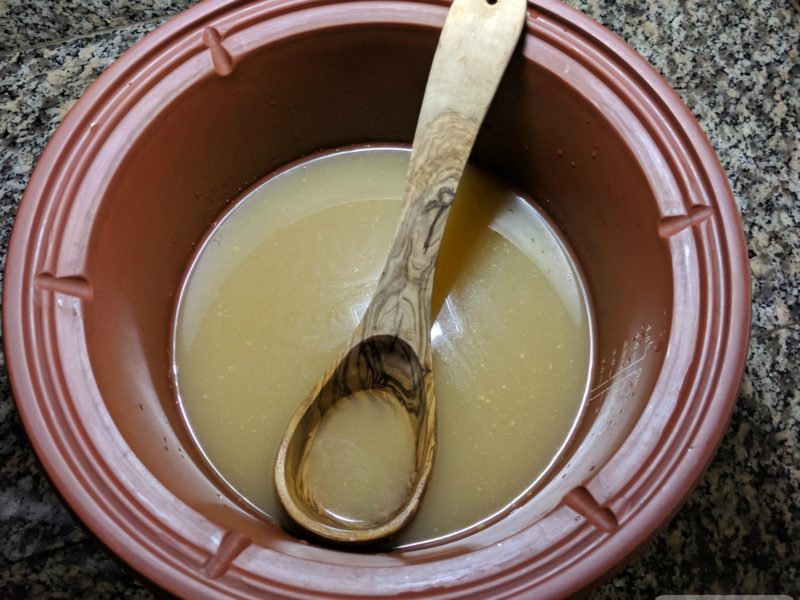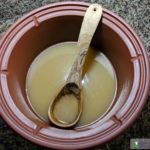
I’ve had a number of inquiries recently on how to make bone broth in a slow cooker like the Vita-Clay.
Since I’ve already posted about how to make meat stock, I thought I would post my recipe for making bone broth in a clay slow cooker too.
Why make broth in a clay slow cooker anyway? Why not a speedy Instant Pot, a crockpot or a stainless steel stockpot? The reason is because bone broth is slightly acidic due to the addition of vinegar (raw or homemade apple cider vinegar is ideal) to help draw out nutrients into the broth.
This acidic pH contributes to leaching of heavy metals most notably carcinogenic nickel and excessive amounts of chromium from cookware made with stainless steel. Compelling research on the subject caused me to switch to clay for making broth several years ago.
Slow Cooker Bone Broth
Note that the clay used to make a Vita-Clay slow cooker is tested for purity.
It is 100% lead-free, so don’t be swayed by the astroturfed online “reviews” that say otherwise just to sell a competitive product.
Below is my recipe for making chicken bone broth in a Vita-Clay. It is basically the same to make beef broth, you just extend the slow cooking time so it is roughly double the time to make chicken broth.

Slow Cooker Bone Broth Recipe
How to make broth in a clay based slow cooker like the Vita-Clay.
Ingredients
- 2 chicken carcasses preferably pastured and organic
- filtered water to cover
- 3 carrots chopped, preferably organic
- 3 celery sticks chopped, preferably organic
- 2 onions medium, chopped, preferably organic
- 1 Tbl apple cider vinegar homemade or packaged in glass
- 4 chicken feet optional
Instructions
-
Place the chicken carcasses and optional chicken feet in the clay pot.
-
Add the chopped vegetables and add enough filtered water to cover (about 4 quarts).
-
Stir in apple cider vinegar and secure the cover.
-
Cook on "low" or "soup" for 6 hours.
-
Check pot and top up with additional filtered water if needed. Cook on "low" or "soup" for an additional 6 hours.
-
Strain bones and vegetables.
-
Cool on the counter and refrigerate for 8 hours or overnight. Skim off chicken fat and reserve in a small glass container for cooking.
-
Freeze broth you will not use in a week. Use as a base for soups and sauces.








Hi Sarah, if I use uncooked carcass and feet, should I cook it longer?
Thank you!
Hi Sarah,
In this recipe you call for only 1 tablespoon of ACV however in your other bone broth recipe using a full chicken You call four 1/4 cup of ACV. Why do you call for less here? Thank you
I used to use more ACV and if you want to use that much you can, but I’ve learned over time that less is just as good and the flavor of the broth is actually better as a result. Both work … do what you prefer.
Hi. I read on another web site (eat beautiful) that according to Dr. Natasha Campbell-McBride, we should skim & remove the fat scum after the 1st 3 hours because it will become rancid & make the broth taste bitter. What are your thoughts on this? Thanks!
Yes, that is fine to skim off the fat.
Do you add the chicken’s neck, liver, gizzard, etc., as well? Thanks!
Cook those separately. https://www.thehealthyhomeeconomist.com/video-dont-toss-those-turkey-giblets/
Is it ok to only use 1 chicken carcass? If yes, would I just 1/2 all the other ingredients? Thanks!
Yes, that works fine.
Hi! Thanks for this recipe! The chicken carcasses have to be cooked or should I use a raw chicken carcasse?
Yes, the chicken carcass should be cooked.